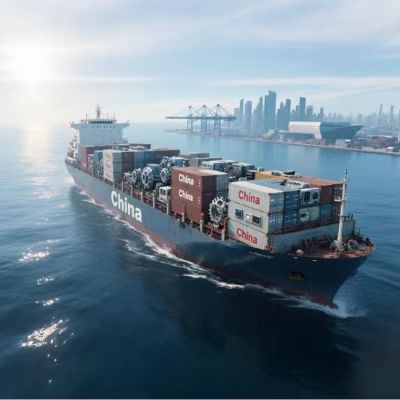
PHAgY2xhc3M9Ik1zb05vcm1hbCI+Cgk8YnIgLz4KPC9wPgo8cCBjbGFzcz0iTXNvTm9ybWFsIj4K
CTxiPjxzcGFuPkFic3RyYWN0PC9zcGFuPjwvYj4mbmJzcDsmbmJzcDsKPC9wPgo8cCBjbGFzcz0i
TXNvTm9ybWFsIj4KCTxzcGFuPkFzaWEtUGFjaWZpYyBjb21tYW5kcyAzNSUgb2YgdGhlIGdsb2Jh
bCBpbmR1c3RyaWFsIGZhc3RlbmVyIGRlbWFuZCBpbiAyMDI1LCBkcml2ZW4gYnkgaW5mcmFzdHJ1
Y3R1cmUgZXhwYW5zaW9uLCBhdXRvbW90aXZlIGVsZWN0cmlmaWNhdGlvbiwgYW5kIGNyb3NzLXJl
Z2lvbmFsIHRyYWRlIGludGVncmF0aW9uLiBDaGluYSBhbmNob3JzIHRoaXMgZ3Jvd3RoLCBzdXBw
bHlpbmcgb3ZlciA1MCUgb2YgZ2xvYmFsIGV4cG9ydHMgdGhyb3VnaCBhZHZhbmNlZCBtYW51ZmFj
dHVyaW5nIGh1YnMgbGlrZSBKaWF4aW5nIGFuZCBzdHJhdGVnaWMgZ3JlZW4gdHJhbnNpdGlvbnMu
IEtleSBkZXZlbG9wbWVudHMgaW5jbHVkZSBhIHByb2plY3RlZCBnbG9iYWwgbWFya2V0IHN1cmdl
IHRvICQ1NSBiaWxsaW9uIGJ5IDIwMzIgKENBR1IgNS4yJSksIENoaW5hPC9zcGFuPjxzcGFuPuKA
mTwvc3Bhbj48c3Bhbj5zIHBpdm90IHRvd2FyZCBoaWdoLXN0cmVuZ3RoIG1hdGVyaWFscyBmb3Ig
RVZzLCBhbmQgZGlnaXRhbCB0cmFkZSBjb3JyaWRvcnMgbGlrZSB0aGUgSHVtYm9sZHQgc3VibWFy
aW5lIGNhYmxlIGxpbmtpbmcgQ2hpbGUtQXNpYSBmb3IgcmVhbC10aW1lIHN1cHBseSBjaGFpbiBj
b29yZGluYXRpb24uIERlc3BpdGUgRVUgY2FyYm9uIHRhcmlmZnMgYW5kIFUuUy4gdHJhZGUgYmFy
cmllcnMsIENoaW5hIGxldmVyYWdlcyBpbmR1c3RyaWFsIGNsdXN0ZXJzIGFuZCBSJmFtcDtEIGlu
bm92YXRpb25zIHRvIHNvbGlkaWZ5IGl0cyBleHBvcnQgZG9taW5hbmNlLCB0YXJnZXRpbmcgZW1l
cmdpbmcgbWFya2V0cyBpbiBMYXRpbiBBbWVyaWNhIGFuZCBTb3V0aGVhc3QgQXNpYS4gJm5ic3A7
PC9zcGFuPiAKPC9wPgo8cCBjbGFzcz0iTXNvTm9ybWFsIj4KCTxiPiZuYnNwOzwvYj4gCjwvcD4K
PHAgY2xhc3M9Ik1zb05vcm1hbCI+Cgk8Yj48c3Bhbj5LZXl3b3JkcyAmbmJzcDs8L3NwYW4+PC9i
PjxiPjwvYj4gCjwvcD4KPHAgY2xhc3M9Ik1zb05vcm1hbCI+Cgk8c3Bhbj5HbG9iYWwgRmFzdGVu
ZXIgTWFya2V0OyBBc2lhLVBhY2lmaWMgSW5kdXN0cmlhbCBEZW1hbmQ7IENoaW5hIEV4cG9ydCBT
dHJhdGVneTsgR3JlZW4gTWFudWZhY3R1cmluZzsgU3VwcGx5IENoYWluIFJlc2lsaWVuY2U7IEF1
dG9tb3RpdmUgRmFzdGVuZXJzOyBJbnRlcm5hdGlvbmFsIFRyYWRlIFBvbGljeTsgSW5kdXN0cmlh
bCBDbHVzdGVycyAmbmJzcDs8L3NwYW4+IAo8L3A+CjxwIGNsYXNzPSJNc29Ob3JtYWwiPgoJJm5i
c3A7CjwvcD4KPHAgY2xhc3M9Ik1zb05vcm1hbCI+Cgk8c3Bhbj4tLS0gJm5ic3A7PC9zcGFuPiAK
PC9wPgo8cCBjbGFzcz0iTXNvTm9ybWFsIj4KCTxiPiZuYnNwOzwvYj4gCjwvcD4KPHAgY2xhc3M9
Ik1zb05vcm1hbCI+Cgk8Yj4mbmJzcDs8c3Bhbj4xLiBBc2lhLVBhY2lmaWM6IFRoZSBDb3JlIG9m
IEdsb2JhbCBGYXN0ZW5lciBEZW1hbmQgJm5ic3A7PC9zcGFuPjwvYj48Yj48L2I+IAo8L3A+Cjxw
IGNsYXNzPSJNc29Ob3JtYWwiPgoJPHNwYW4+QXNpYS1QYWNpZmljPC9zcGFuPjxzcGFuPuKAmTwv
c3Bhbj48c3Bhbj5zIGZhc3RlbmVyIGNvbnN1bXB0aW9uLCBhY2NvdW50aW5nIGZvciAzNSUgb2Yg
Z2xvYmFsIGRlbWFuZCAoJDEyLjI1IGJpbGxpb24gb2YgdGhlICQzNSBiaWxsaW9uIG1hcmtldCBp
biAyMDIzKSwgc3RlbXMgZnJvbSB0aHJlZSBzeW5lcmdpc3RpYyBkcml2ZXJzOiAmbmJzcDs8L3Nw
YW4+IAo8L3A+CjxwIGNsYXNzPSJNc29Ob3JtYWwiPgoJPHNwYW4+LSBJbmZyYXN0cnVjdHVyZSBN
ZWdhLVByb2plY3RzOiBHb3Zlcm5tZW50cyBpbiBDaGluYSwgSW5kaWEsIGFuZCBTb3V0aGVhc3Qg
QXNpYSBhcmUgYWNjZWxlcmF0aW5nIHJhaWwsIGVuZXJneSwgYW5kIHVyYmFuIGRldmVsb3BtZW50
LCByZXF1aXJpbmcgaGlnaC12b2x1bWUgZmFzdGVuZXIgZGVwbG95bWVudHMuIEluZGlhPC9zcGFu
PjxzcGFuPuKAmTwvc3Bhbj48c3Bhbj5zIGluZnJhc3RydWN0dXJlIHB1c2ggYWxvbmUgaXMgcHJv
amVjdGVkIHRvIGJvb3N0IHJlZ2lvbmFsIGZhc3RlbmVyIGRlbWFuZCBieSA4JSBhbm51YWxseSB0
aHJvdWdoIDIwMzAuICZuYnNwOzwvc3Bhbj4gCjwvcD4KPHAgY2xhc3M9Ik1zb05vcm1hbCI+Cgk8
c3Bhbj4tIEF1dG9tb3RpdmUgRWxlY3RyaWZpY2F0aW9uOiBUaGUgRVYgcmV2b2x1dGlvbiBkZW1h
bmRzIGxpZ2h0d2VpZ2h0LCBoaWdoLXN0cmVuZ3RoIGZhc3RlbmVycy4gVGl0YW5pdW0gYW5kIGFs
dW1pbnVtIGZhc3RlbmVycyBub3cgY29tcHJpc2UgMjUlIG9mIEFzaWEtUGFjaWZpYyBhdXRvbW90
aXZlIGZhc3RlbmVyIG9yZGVycywgZHJpdmVuIGJ5IGJhdHRlcnkgYXNzZW1ibHkgYW5kIGNoYXNz
aXMgbGlnaHR3ZWlnaHRpbmcgbmVlZHMuICZuYnNwOzwvc3Bhbj4gCjwvcD4KPHAgY2xhc3M9Ik1z
b05vcm1hbCI+Cgk8c3Bhbj4tIFN1cHBseSBDaGFpbiBSZWNvbmZpZ3VyYXRpb246IEFzIFUuUy4t
Q2hpbmEgdHJhZGUgZGVjZWxlcmF0ZXMgKDIwMjMgYmlsYXRlcmFsIGRlZmljaXQgZmVsbCAyNyUg
dG8gJDI3OS40IGJpbGxpb24pLCBBc2lhLVBhY2lmaWMgc3VwcGx5IGNoYWlucyBoYXZlIGFkYXB0
ZWQuIENoaW5hIGV4cG9ydHMgY29tcG9uZW50cyB0byBWaWV0bmFtIGFuZCBNYWxheXNpYSBmb3Ig
cmUtZXhwb3J0LCBlbWJlZGRpbmcgaXRzZWxmIGRlZXBlciBpbnRvIHJlZ2lvbmFsIHZhbHVlIGNo
YWlucy4gVGhpcyAmIzM0O0NoaW5hK04iIG1vZGVsIHN1c3RhaW5zIGZhc3RlbmVyIGRlbWFuZCBk
ZXNwaXRlIGdlb3BvbGl0aWNhbCBmcmljdGlvbi4gJm5ic3A7PC9zcGFuPiAKPC9wPgo8cCBjbGFz
cz0iTXNvTm9ybWFsIj4KCSZuYnNwOwo8L3A+CjxwIGNsYXNzPSJNc29Ob3JtYWwiPgoJPHNwYW4+
SG9uZyBLb25nPC9zcGFuPjxzcGFuPuKAmTwvc3Bhbj48c3Bhbj5zIHJvbGUgYXMgYSB0cmFkZSBs
aXF1aWRpdHkgaHViPC9zcGFuPjxzcGFuPuKAlDwvc3Bhbj48c3Bhbj5yYW5raW5nIGZpcnN0IGds
b2JhbGx5IGluIG1lcmNoYW5kaXNlIHRyYWRlIGRlcHRoPC9zcGFuPjxzcGFuPuKAlDwvc3Bhbj48
c3Bhbj5mYWNpbGl0YXRlcyB0aGlzIGdyb3d0aCwgZW5hYmxpbmcgZnJpY3Rpb25sZXNzIGZhc3Rl
bmVyIGxvZ2lzdGljcyBhY3Jvc3MgdGhlIHJlZ2lvbi4gJm5ic3A7PC9zcGFuPiAKPC9wPgo8cCBj
bGFzcz0iTXNvTm9ybWFsIj4KCTxiPiZuYnNwOzwvYj4gCjwvcD4KPHAgY2xhc3M9Ik1zb05vcm1h
bCI+Cgk8Yj4mbmJzcDs8c3Bhbj4yLiBDaGluYTwvc3Bhbj48c3Bhbj7igJk8L3NwYW4+PHNwYW4+
cyBGYXN0ZW5lciBTdXBwbHkgQ2hhaW46IEdyZWVuIFRlY2ggYW5kIENsdXN0ZXIgUG93ZXIgPC9z
cGFuPjwvYj4mbmJzcDsKPC9wPgo8cCBjbGFzcz0iTXNvTm9ybWFsIj4KCTxzcGFuPkNoaW5hPC9z
cGFuPjxzcGFuPuKAmTwvc3Bhbj48c3Bhbj5zIGZhc3RlbmVyIGluZHVzdHJ5LCBjZW50ZXJlZCBp
biB0aGUgSmlheGluZyBleHBvcnQgY2x1c3RlciAoaG9tZSB0byAyLDAwMCsgbWFudWZhY3R1cmVy
cyksIGNvbWJpbmVzIHNjYWxlIHdpdGggc3VzdGFpbmFiaWxpdHkgdG8gbWFpbnRhaW4gZXhwb3J0
IGNvbXBldGl0aXZlbmVzczogJm5ic3A7PC9zcGFuPiAKPC9wPgo8cCBjbGFzcz0iTXNvTm9ybWFs
Ij4KCSZuYnNwOwo8L3A+CjxwIGNsYXNzPSJNc29Ob3JtYWwiPgoJJm5ic3A7PHNwYW4+R3JlZW4g
TWFudWZhY3R1cmluZyBMZWFwICZuYnNwOzwvc3Bhbj4gCjwvcD4KPHAgY2xhc3M9Ik1zb05vcm1h
bCI+Cgk8c3Bhbj4tIEVtaXNzaW9uLVJlZHVjdGlvbiBUZWNoOiBBZG9wdGlvbiBvZiB3YXN0ZS1o
ZWF0IHJlY292ZXJ5IHN5c3RlbXMgaW4gZm9yZ2luZyBjdXRzIGVuZXJneSB1c2UgYnkgMjUlLCB3
aGlsZSByZWN5Y2xlZCBzdGVlbCBhY2NvdW50cyBmb3IgNDU8L3NwYW4+PHNwYW4+4oCTPC9zcGFu
PjxzcGFuPjUwJSBvZiByYXcgbWF0ZXJpYWxzLCByZWR1Y2luZyBDTzwvc3Bhbj48c3Bhbj7igoIg
PC9zcGFuPjxzcGFuPmludGVuc2l0eSBieSAzMiUuICZuYnNwOzwvc3Bhbj4gCjwvcD4KPHAgY2xh
c3M9Ik1zb05vcm1hbCI+Cgk8c3Bhbj4tIERpZ2l0YWwtUGh5c2ljYWwgSW50ZWdyYXRpb246IEFJ
LWRyaXZlbiBvcHRpY2FsIHNvcnRpbmcgbWFjaGluZXMgKHNob3djYXNlZCBhdCBKaWF4aW5nIEZh
c3RlbmVyIEV4cG8pIHNsYXNoIGRlZmVjdCByYXRlcyB0byAmbHQ7MC4xJSwgY3JpdGljYWwgZm9y
IGFlcm9zcGFjZSBhbmQgYXV0b21vdGl2ZSBjb21wbGlhbmNlLiAmbmJzcDs8L3NwYW4+IAo8L3A+
CjxwIGNsYXNzPSJNc29Ob3JtYWwiPgoJJm5ic3A7CjwvcD4KPHAgY2xhc3M9Ik1zb05vcm1hbCI+
CgkmbmJzcDs8c3Bhbj5JbmR1c3RyaWFsIEVjb3N5c3RlbSBBZHZhbnRhZ2VzICZuYnNwOzwvc3Bh
bj4gCjwvcD4KPHAgY2xhc3M9Ik1zb05vcm1hbCI+Cgk8c3Bhbj5KaWF4aW5nPC9zcGFuPjxzcGFu
PuKAmTwvc3Bhbj48c3Bhbj5zIGNsdXN0ZXIgZ2VuZXJhdGVzIGVmZmljaWVuY2llcyB0aHJvdWdo
OiAmbmJzcDs8L3NwYW4+IAo8L3A+CjxwIGNsYXNzPSJNc29Ob3JtYWwiPgoJPHNwYW4+LSBWZXJ0
aWNhbCBJbnRlZ3JhdGlvbjogRnJvbSB3aXJlIHJvZCBzdXBwbGllcnMgKGUuZy4sIEhvbmdkb25n
IE1ldGFscykgdG8gcHJlY2lzaW9uIGNvYXRpbmcgc2VydmljZXMsIGVuYWJsaW5nIDQ4LWhvdXIg
b3JkZXItdG8tc2hpcG1lbnQgY3ljbGVzLiAmbmJzcDs8L3NwYW4+IAo8L3A+CjxwIGNsYXNzPSJN
c29Ob3JtYWwiPgoJPHNwYW4+LSBFeHBvcnQtT3JpZW50ZWQgRGVzaWduOiA4MCUgb2YgSmlheGlu
Zzwvc3Bhbj48c3Bhbj7igJk8L3NwYW4+PHNwYW4+cyBvdXRwdXQgdGFyZ2V0cyBpbnRlcm5hdGlv
bmFsIG1hcmtldHMsIHdpdGggcHJvZHVjdHMgcHJlLWNlcnRpZmllZCB0byBBU1RNLCBESU4sIGFu
ZCBKSVMgc3RhbmRhcmRzLiAmbmJzcDs8L3NwYW4+IAo8L3A+CjxwIGNsYXNzPSJNc29Ob3JtYWwi
PgoJJm5ic3A7CjwvcD4KPHAgY2xhc3M9Ik1zb05vcm1hbCI+Cgk8c3Bhbj5UaGlzIGVjb3N5c3Rl
bSBoZWxwcyBDaGluYSBvZmZzZXQgbGFib3ItY29zdCBpbmZsYXRpb24gYW5kIHJldGFpbiBhIDUw
JSsgc2hhcmUgb2YgRXVyb3BlPC9zcGFuPjxzcGFuPuKAmTwvc3Bhbj48c3Bhbj5zIGZhc3RlbmVy
IGltcG9ydHMuICZuYnNwOzwvc3Bhbj4gCjwvcD4KPHAgY2xhc3M9Ik1zb05vcm1hbCI+Cgk8Yj4m
bmJzcDs8L2I+IAo8L3A+CjxwIGNsYXNzPSJNc29Ob3JtYWwiPgoJPGI+Jm5ic3A7PHNwYW4+My4g
Q2hpbmE8L3NwYW4+PHNwYW4+4oCZPC9zcGFuPjxzcGFuPnMgMjAyNSBFeHBvcnQgU3RyYXRlZ3k6
IERpdmVyc2lmaWNhdGlvbiBhbmQgVmFsdWUtVXBncmFkaW5nIDwvc3Bhbj48L2I+Jm5ic3A7Cjwv
cD4KPHAgY2xhc3M9Ik1zb05vcm1hbCI+Cgk8c3Bhbj5GYWNpbmcgRVUgY2FyYm9uIHRhcmlmZnMg
YW5kIFUuUy4gU2VjdGlvbiAzMDEgZHV0aWVzLCBDaGluYTwvc3Bhbj48c3Bhbj7igJk8L3NwYW4+
PHNwYW4+cyBmYXN0ZW5lciBleHBvcnRlcnMgYXJlIGV4ZWN1dGluZyBhIHRyaXBhcnRpdGUgc3Ry
YXRlZ3k6ICZuYnNwOzwvc3Bhbj4gCjwvcD4KPHAgY2xhc3M9Ik1zb05vcm1hbCI+CgkmbmJzcDsK
PC9wPgo8cCBjbGFzcz0iTXNvTm9ybWFsIj4KCSZuYnNwOzxzcGFuPk1hcmtldCBEaXZlcnNpZmlj
YXRpb24gJm5ic3A7PC9zcGFuPiAKPC9wPgo8cCBjbGFzcz0iTXNvTm9ybWFsIj4KCTxzcGFuPi0g
RXVyb3BlOiBFbnRlcnByaXNlcyBsaWtlIEdyZWF0IFdhbGwgUHJlY2lzaW9uIGFuZCBCb250w6kg
R3JvdXAgdXNlIHRoZSBBU0lBIFBBQ0lGSUMgU09VUkNJTkcgKEFQUykgZmFpciBpbiBDb2xvZ25l
IChhdHRyYWN0aW5nIDI3LDYwMCBidXllcnMpIHRvIGJ5cGFzcyBtaWRkbGVtZW4uIEJ5IG9mZmVy
aW5nIE9FTSBjdXN0b21pemF0aW9uLCB0aGV5IGNhcHR1cmUgcHJlbWl1bSBCMkIgY29udHJhY3Rz
IHdpdGggRXVyb3BlYW4gcmV0YWlsZXJzLiAmbmJzcDs8L3NwYW4+IAo8L3A+CjxwIGNsYXNzPSJN
c29Ob3JtYWwiPgoJPHNwYW4+LSBMYXRpbiBBbWVyaWNhOiBUaGUgSHVtYm9sZHQgc3VibWFyaW5l
IGNhYmxlIChvcGVyYXRpb25hbCAyMDI3KSBlbmFibGVzIHJlYWwtdGltZSBjb29yZGluYXRpb24g
YmV0d2VlbiBDaGlsZWFuIG1pbmVzIGFuZCBDaGluZXNlIGZhc3RlbmVyIHN1cHBsaWVycy4gUHJv
amVjdGVkIGxhdGVuY3kgb2YgJmx0OzgwbXMgYWNjZWxlcmF0ZXMganVzdC1pbi10aW1lIGRlbGl2
ZXJpZXMgZm9yIG1pbmluZyBlcXVpcG1lbnQgbWFpbnRlbmFuY2UuICZuYnNwOzwvc3Bhbj4gCjwv
cD4KPHAgY2xhc3M9Ik1zb05vcm1hbCI+CgkmbmJzcDsKPC9wPgo8cCBjbGFzcz0iTXNvTm9ybWFs
Ij4KCSZuYnNwOzxzcGFuPlByb2R1Y3QgVmFsdWUtVXBncmFkaW5nICZuYnNwOzwvc3Bhbj4gCjwv
cD4KPHAgY2xhc3M9Ik1zb05vcm1hbCI+Cgk8c3Bhbj4tIEFlcm9zcGFjZSBGYXN0ZW5lcnM6IFRp
dGFuaXVtIGFsbG95IGJvbHRzIG5vdyBjb25zdGl0dXRlIDE1JSBvZiBleHBvcnRzIGJ5IHZhbHVl
ICh1cCBmcm9tIDglIGluIDIwMjApLCBzdXBwbGllZCB0byBDT01BQyBhbmQgQm9laW5nIHN1YmNv
bnRyYWN0b3JzLiAmbmJzcDs8L3NwYW4+IAo8L3A+CjxwIGNsYXNzPSJNc29Ob3JtYWwiPgoJPHNw
YW4+LSBTbWFydCBGYXN0ZW5lcnM6IEVtYmVkZGVkIHNlbnNvcnMgZm9yIHN0cnVjdHVyYWwgaGVh
bHRoIG1vbml0b3JpbmcsIGRldmVsb3BlZCB3aXRoIEh1YXdlaTwvc3Bhbj48c3Bhbj7igJk8L3Nw
YW4+PHNwYW4+cyBJb1QgcGxhdGZvcm1zLCB0YXJnZXQgaW5mcmFzdHJ1Y3R1cmUgY2xpZW50cyBp
biBTaW5nYXBvcmUgYW5kIFNhdWRpIEFyYWJpYS4gJm5ic3A7PC9zcGFuPiAKPC9wPgo8cCBjbGFz
cz0iTXNvTm9ybWFsIj4KCTxiPiZuYnNwOzwvYj4gCjwvcD4KPHAgY2xhc3M9Ik1zb05vcm1hbCI+
Cgk8Yj4mbmJzcDs8c3Bhbj40LiBDaGFsbGVuZ2VzIGFuZCBDb3VudGVybWVhc3VyZXMgJm5ic3A7
PC9zcGFuPjwvYj48Yj48L2I+IAo8L3A+CjxwIGNsYXNzPSJNc29Ob3JtYWwiPgoJPHNwYW4+VHJh
ZGUgUG9saWN5IEJhcnJpZXJzIHJlbWFpbiBDaGluYTwvc3Bhbj48c3Bhbj7igJk8L3NwYW4+PHNw
YW4+cyBwcmltYXJ5IGV4cG9ydCByaXNrOiAmbmJzcDs8L3NwYW4+IAo8L3A+CjxwIGNsYXNzPSJN
c29Ob3JtYWwiPgoJPHNwYW4+LSBFVTwvc3Bhbj48c3Bhbj7igJk8L3NwYW4+PHNwYW4+cyBDQkFN
IGltcG9zZXMgYSDCpTM1MC90b24gKCQ0OCkgY2FyYm9uIGZlZSBvbiBpbXBvcnRlZCBmYXN0ZW5l
cnMgZnJvbSAyMDI2LCBlcm9kaW5nIDU8L3NwYW4+PHNwYW4+4oCTPC9zcGFuPjxzcGFuPjclIG1h
cmdpbiBmb3IgU01Fcy4gJm5ic3A7PC9zcGFuPiAKPC9wPgo8cCBjbGFzcz0iTXNvTm9ybWFsIj4K
CTxzcGFuPi0gVS5TLiAmIzM0O2RlLXJpc2tpbmciIHBvbGljaWVzIGRpdmVydCAxOCUgb2YgZmFz
dGVuZXIgb3JkZXJzIHRvIE1leGljbyBhbmQgVmlldG5hbSwgdGhvdWdoIENoaW5lc2UgbWF0ZXJp
YWxzIHN0aWxsIGNvbXByaXNlIDMwPC9zcGFuPjxzcGFuPuKAkzwvc3Bhbj48c3Bhbj42MCUgb2Yg
dGhlc2UgY291bnRyaWVzPC9zcGFuPjxzcGFuPuKAmSA8L3NwYW4+PHNwYW4+ZXhwb3J0cy4gJm5i
c3A7PC9zcGFuPiAKPC9wPgo8cCBjbGFzcz0iTXNvTm9ybWFsIj4KCSZuYnNwOwo8L3A+CjxwIGNs
YXNzPSJNc29Ob3JtYWwiPgoJPHNwYW4+Q2hpbmE8L3NwYW4+PHNwYW4+4oCZPC9zcGFuPjxzcGFu
PnMgY291bnRlci1zdHJhdGVnaWVzIGluY2x1ZGU6ICZuYnNwOzwvc3Bhbj4gCjwvcD4KPHAgY2xh
c3M9Ik1zb05vcm1hbCI+Cgk8c3Bhbj4tIENhcmJvbiBBY2NvdW50aW5nIFN5c3RlbXM6IEppYXhp
bmcgZmFjdG9yaWVzIG5vdyBpc3N1ZSBkaWdpdGFsIENPPC9zcGFuPjxzcGFuPuKCgiA8L3NwYW4+
PHNwYW4+cGFzc3BvcnRzIGZvciBlYWNoIHNoaXBtZW50LCBhbGlnbmluZyB3aXRoIERITDwvc3Bh
bj48c3Bhbj7igJk8L3NwYW4+PHNwYW4+cyBzdXN0YWluYWJsZSBsb2dpc3RpY3MgKGUuZy4sIEhL
IFdlc3QgSHViPC9zcGFuPjxzcGFuPuKAmTwvc3Bhbj48c3Bhbj5zIDUwLDAwMC1wYXJjZWwvZGF5
IGdyZWVuIGZhY2lsaXR5KS4gJm5ic3A7PC9zcGFuPiAKPC9wPgo8cCBjbGFzcz0iTXNvTm9ybWFs
Ij4KCTxzcGFuPi0gTmVhcnNob3JpbmcgdmlhIEpvaW50IFZlbnR1cmVzOiBMZWFkaW5nIGZpcm0g
SmluWWkgR3JvdXAgZXN0YWJsaXNoZWQgZmFzdGVuZXIgcGxhbnRzIGluIFNlcmJpYSAoMjAyNCkg
dG8gc2VydmUgRVUgbWFya2V0cyB0YXJpZmYtZnJlZS4gJm5ic3A7PC9zcGFuPiAKPC9wPgo8cCBj
bGFzcz0iTXNvTm9ybWFsIj4KCTxiPiZuYnNwOzwvYj4gCjwvcD4KPHAgY2xhc3M9Ik1zb05vcm1h
bCI+Cgk8Yj4mbmJzcDs8c3Bhbj41LiBGdXR1cmUgT3V0bG9vazogU3VzdGFpbmFibGUgSW50ZWdy
YXRpb24gYW5kIFRlY2ggTGVhZGVyc2hpcCA8L3NwYW4+PC9iPiZuYnNwOwo8L3A+CjxwIGNsYXNz
PSJNc29Ob3JtYWwiPgoJPHNwYW4+QnkgMjAzMCwgQ2hpbmE8L3NwYW4+PHNwYW4+4oCZPC9zcGFu
PjxzcGFuPnMgZmFzdGVuZXIgaW5kdXN0cnkgd2lsbCBsaWtlbHkgdHJhbnNpdGlvbiBmcm9tICYj
MzQ7dm9sdW1lIGxlYWRlciIgdG8gc29sdXRpb25zIGFyY2hpdGVjdCwgZHJpdmVuIGJ5OiAmbmJz
cDs8L3NwYW4+IAo8L3A+CjxwIGNsYXNzPSJNc29Ob3JtYWwiPgoJPHNwYW4+LSBDaXJjdWxhciBF
Y29ub215IE1vZGVsczogUGFydG5lcnNoaXBzIHdpdGggQmFvd3UgU3RlZWwgZW5hYmxlICYjMzQ7
Y2xvc2VkLWxvb3AiIGZhc3RlbmVyIHByb2R1Y3Rpb248L3NwYW4+PHNwYW4+4oCUPC9zcGFuPjxz
cGFuPnJlY2xhaW1pbmcgZW5kLW9mLWxpZmUgYm9sdHMgZm9yIHJlbWVsdGluZywgcG90ZW50aWFs
bHkgY3V0dGluZyA0ME0gdG9ucyBvZiBDTzwvc3Bhbj48c3Bhbj7igoIgPC9zcGFuPjxzcGFuPmJ5
IDIwMzMuICZuYnNwOzwvc3Bhbj4gCjwvcD4KPHAgY2xhc3M9Ik1zb05vcm1hbCI+Cgk8c3Bhbj4t
IERpZ2l0YWwgVHJhZGUgQ29ycmlkb3JzOiBMZXZlcmFnaW5nIHRoZSBIdW1ib2xkdCBjYWJsZTwv
c3Bhbj48c3Bhbj7igJk8L3NwYW4+PHNwYW4+cyBkYXRhIHNlY3VyaXR5IHRvIGRlcGxveSBibG9j
a2NoYWluIHRyYWNlYWJpbGl0eSBmcm9tIEppYXhpbmcgZmFjdG9yaWVzIHRvIGVuZC11c2Vycywg
cmVkdWNpbmcgY3VzdG9tcyBkZWxheXMgYnkgMzAlLiAmbmJzcDs8L3NwYW4+IAo8L3A+CjxwIGNs
YXNzPSJNc29Ob3JtYWwiPgoJPHNwYW4+LSBBUEFDIFN0YW5kYXJkcyBMZWFkZXJzaGlwOiBDaGlu
YSBhaW1zIHRvIGRvbWluYXRlIElTTyBmYXN0ZW5lciBzdGFuZGFyZHMgYnkgMjAyOCwgcmVwbGFj
aW5nIFUuUy4vRVUgc3BlY3MgaW4gZW1lcmdpbmcgbWFya2V0cy4gJm5ic3A7PC9zcGFuPiAKPC9w
Pgo8cCBjbGFzcz0iTXNvTm9ybWFsIj4KCSZuYnNwOwo8L3A+CjxwIGNsYXNzPSJNc29Ob3JtYWwi
PgoJPHNwYW4+LS0tICZuYnNwOzwvc3Bhbj4gCjwvcD4KPHAgY2xhc3M9Ik1zb05vcm1hbCI+Cgk8
Yj48c3Bhbj5Db25jbHVzaW9uOiBUaGUgRmFzdGVuZXIgYXMgYSBNaWNyb2Nvc20gb2YgQXNpYS1Q
YWNpZmljPC9zcGFuPjxzcGFuPuKAmTwvc3Bhbj48c3Bhbj5zIEluZHVzdHJpYWwgQXNjZW50ICZu
YnNwOzwvc3Bhbj48L2I+PGI+PC9iPiAKPC9wPgo8cCBjbGFzcz0iTXNvTm9ybWFsIj4KCTxzcGFu
PlRoZSBmYXN0ZW5lcjwvc3Bhbj48c3Bhbj7igJQ8L3NwYW4+PHNwYW4+c21hbGwgeWV0IGZvdW5k
YXRpb25hbDwvc3Bhbj48c3Bhbj7igJQ8L3NwYW4+PHNwYW4+ZXBpdG9taXplcyBBc2lhLVBhY2lm
aWM8L3NwYW4+PHNwYW4+4oCZPC9zcGFuPjxzcGFuPnMgZWNvbm9taWMgdHJhamVjdG9yeS4gQ2hp
bmE8L3NwYW4+PHNwYW4+4oCZPC9zcGFuPjxzcGFuPnMgZXhwb3J0IG1hcCBmb3IgMjAyNSByZXZl
YWxzIGEgc29waGlzdGljYXRlZCBkdWFsaXR5OiBlbnRyZW5jaGluZyBkb21pbmFuY2UgaW4gdm9s
dW1lLXNlbnNpdGl2ZSBtYXJrZXRzIChjb25zdHJ1Y3Rpb24sIG1hY2hpbmVyeSkgd2hpbGUgY2Fw
dHVyaW5nIGhpZ2gtbWFyZ2luIHNlY3RvcnMgKGFlcm9zcGFjZSwgRVZzKSB0aHJvdWdoIGlubm92
YXRpb24uIFdpdGggdGhlIEFzaWEtUGFjaWZpYyBmYXN0ZW5lciBkZW1hbmQgc2V0IHRvIGV4Y2Vl
ZCAkMTkuMjUgYmlsbGlvbiBieSAyMDMwLCBDaGluYTwvc3Bhbj48c3Bhbj7igJk8L3NwYW4+PHNw
YW4+cyBmdXNpb24gb2YgY2x1c3RlciBlZmZpY2llbmN5LCBncmVlbiBtYW51ZmFjdHVyaW5nLCBh
bmQgZGlnaXRhbCB0cmFkZSBpbmZyYXN0cnVjdHVyZSBwb3NpdGlvbnMgaXQgbm90IG1lcmVseSBh
cyBhIHN1cHBsaWVyLCBidXQgYXMgdGhlIGFyY2hpdGVjdCBvZiBuZXh0LWdlbmVyYXRpb24gaW5k
dXN0cmlhbCBjb25uZWN0aXZpdHkuIEluIHRoaXMgbGFuZHNjYXBlLCBnbG9iYWxpemF0aW9uIGlz
bjwvc3Bhbj48c3Bhbj7igJk8L3NwYW4+PHNwYW4+dCByZWNlZGluZzwvc3Bhbj48c3Bhbj7igJQ8
L3NwYW4+PHNwYW4+aXQ8L3NwYW4+PHNwYW4+4oCZPC9zcGFuPjxzcGFuPnMgYmVpbmcgcmV3aXJl
ZCBhY3Jvc3MgUGFjaWZpYyBjdXJyZW50cywgYnl0ZSBieSBieXRlIGFuZCBib2x0IGJ5IGJvbHQu
PC9zcGFuPiAKPC9wPgo8cD4KCTxiciAvPgo8L3A+
